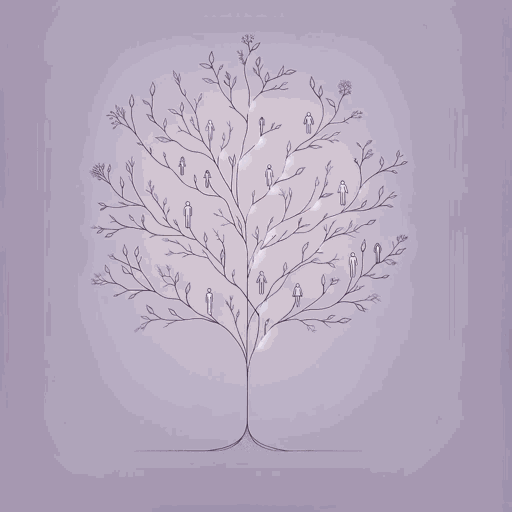45 pages • 1 hour read
Edwidge DanticatKrik? Krak!
Fiction | Short Story Collection | Adult | Published in 1996A modern alternative to SparkNotes and CliffsNotes, SuperSummary offers high-quality Study Guides with detailed chapter summaries and analysis of major themes, characters, and more.
Summary and Study Guide
Overview
Krik? Krak! is the debut short story collection by Haitian American author Edwidge Danticat. Published in 1995, the critically acclaimed collection explores themes of gendered violence, Haitian resilience, and the necessity of art. The collection features nine stories of Haitian men and women living in Port-Au-Prince, New York City, and the fictional town of Ville Rose; many of the stories are interconnected. The title of the collection comes from a Haitian storytelling tradition in which storytellers gauge interest in a tale by asking “Krik?” and audiences respond “Krak!” to signal their engagement. Many of the stories in Krik? Krak! were previously published in literary journals and edited collections.
This summary is based on the 1995 edition by Soho Press.
Content Warning: This collection contains explicit depictions of sexual assault, physical violence, suicide, and death and also contains outdated terms referring to mental disability.
Plot Summary
The first story, “Children of the Sea,” is presented as a series of letters between two anonymous Haitian lovers. A university student with a political radio show writes from a refugee ship that has fled Haiti; his girlfriend writes about the chaos at home. On the refugee ship fleeing to Miami, the boyfriend witnesses a 15-year-old girl who was raped by police giving birth to a baby who quickly dies. The girlfriend’s experience at home is equally disturbing, as her neighbor is brutally murdered, and her family is forced to flee to the countryside. Ultimately, the boat the young man is on sinks off the coast of the Bahamas; meanwhile, his girlfriend is chased by black butterflies, an omen of her lover’s death.
The narrator of “Nineteen Thirty-Seven” is Josephine, whose mother is imprisoned for having wings of flame. Josephine was born in 1937 on the day of a massacre; her mother escaped from the Dominican Republic into Haiti, where Josephine was born. Josephine visits her mother in prison as her health rapidly declines. One night, Josephine is visited by Jacqueline, another massacre survivor, who tells her that her mother has died. Josephine and Jacqueline visit the prison, where her mother’s death is confirmed. Josephine stays at the prison to observe her mother’s body being burnt, and realizes that her mother escaped the massacre by flying across the river.
“A Wall of Fire Rising” tells the story of Guy and Lili, parents to seven-year-old Little Guy. The family lives in a shantytown in the shadow of a sugar mill, where Guy struggles to find temporary work. Little Guy is cast as Dutty Boukman, a Haitian revolutionary, in a school play. Each evening, Little Guy rehearses his lines with his family on a hill behind the sugar mill, while Guy admires a hot air balloon and imagines flying away. Lili warns Guy to stay away from the balloon, but the temptation is too much for Guy to bear. One morning, Guy successfully takes the hot air balloon airborne. As Lili and Little Guy watch, he climbs out of the basket and falls to the ground. Little Guy recites the lines from his play over his dead father.
In “Night Women,” an anonymous 25-year-old Haitian sex worker prepares for an evening of work. She lives with her young son in a one-bedroom house divided by a thin piece of fabric. Each night, as she prepares for work, she has her son dress up in his best clothes, explaining that they are expecting angelic visitors. After her son is asleep, the narrator is visited by a client. In the morning, she watches women preparing to walk hours to a market, and is thankful that she has her days to herself. When her son wakes, he asks if he’s missed the angels again. She responds that the angels will visit them for a lifetime.
“Between the Pool and the Gardenias” is narrated by Marie, a domestic worker who finds a baby lying wrapped in a blanket on the street. Marie, who has experienced many miscarriages, takes the baby to the home in the suburbs where she works as a maid. After a few days, Marie is unable to contain the smell of the baby’s decomposing body. As she tries to bury the body, Marie is caught by the pool cleaner, who accuses her of being a witch. As they wait for the police, Marie thinks that the three of them make a beautiful family.
“The Missing Peace” is narrated by Lamort, a 14-year-old girl living with her grandmother. Lamort’s boyfriend, a young soldier named Raymond, gives her a secret password, “peace,” to protect her from other soldiers. When a young American woman named Emilie comes in search of her mother, Lamort agrees to take her to a nearby churchyard where bodies are often buried. The girls are stopped by a soldier who threatens to shoot the pair when he feels Emilie is not sufficiently respectful. They return home, and the young woman leaves discouraged and without news of her mother. As the story ends, Lamort asks her grandmother to call her Marie Magdalène after her mother.
In “Seeing Things Simply” a 16-year-old girl named Princesse poses as a model for Catherine, a young artist. Each day, Princesse walks from school past a cockfight to Catherine’s house on the beach. Catherine paints Princesse in a variety of poses, including nude, and talks to her about art. Catherine tells Princesse that her favorite art teacher has died in Paris. The next day, Catherine is not at her home when Princesse arrives. When Catherine returns, she explains that she was in Paris visiting her teacher’s grave. She gives Princesse a portrait of herself naked on a beach holding red candles. As Princesse walks home, she stops to draw a portrait of two of her neighbors in the dirt.
“New York Day Women” is narrated by Suzette, a woman living in New York, and punctuated by the words of her mother, a Haitian immigrant. Suzette is walking to work in Manhattan one day when she unexpectedly spots her mother, who rarely leaves Brooklyn. Surprised, Suzette follows her mother into Central Park, where she sees her working as a nanny for a young boy. Suzette reflects on how little she knows her mother, and how different her childhood was from the young boy’s. She continues to work with a new appreciation for her mother.
The last story in the collection is “Caroline’s Wedding,” which is narrated by a Haitian American woman named Grace. The story follows Grace, a new American citizen, as she prepares for her sister Caroline’s wedding. Grace and Caroline’s mother, a Haitian immigrant named Hermine, is jealous of their close relationship and upset that Caroline is getting married and moving out of their shared apartment. As the wedding nears, Grace has increasingly vivid dreams about her dead father. On the day of the wedding, Caroline wakes up anxious, and Hermine consoles her, convincing her to get married. After the wedding, Grace and Hermine return home and make bone soup.
The epilogue to the collection, which is written in the second person, describes the journey of a young Haitian woman who becomes a writer against her family’s wishes. The epilogue compares writing to braiding hair, and indicates that writing is not considered a suitable career for Haitian women. However, the speaker indicates that storytelling is essential to survival and to memorializing those who have died.








Related Titles
By Edwidge Danticat






